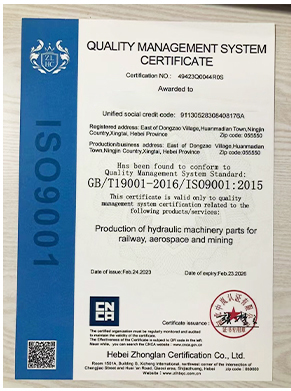- Arabic
- French
- Russian
- Spanish
- Portuguese
- Turkish
- Armenian
- English
- Albanian
- Amharic
- Azerbaijani
- Basque
- Belarusian
- Bengali
- Bosnian
- Bulgarian
- Catalan
- Cebuano
- Corsican
- Croatian
- Czech
- Danish
- Dutch
- Afrikaans
- Esperanto
- Estonian
- Finnish
- Frisian
- Galician
- Georgian
- German
- Greek
- Gujarati
- Haitian Creole
- hausa
- hawaiian
- Hebrew
- Hindi
- Miao
- Hungarian
- Icelandic
- igbo
- Indonesian
- irish
- Italian
- Japanese
- Javanese
- Kannada
- kazakh
- Khmer
- Rwandese
- Korean
- Kurdish
- Kyrgyz
- Lao
- Latin
- Latvian
- Lithuanian
- Luxembourgish
- Macedonian
- Malgashi
- Malay
- Malayalam
- Maltese
- Maori
- Marathi
- Mongolian
- Myanmar
- Nepali
- Norwegian
- Norwegian
- Occitan
- Pashto
- Persian
- Polish
- Punjabi
- Romanian
- Samoan
- Scottish Gaelic
- Serbian
- Sesotho
- Shona
- Sindhi
- Sinhala
- Slovak
- Slovenian
- Somali
- Sundanese
- Swahili
- Swedish
- Tagalog
- Tajik
- Tamil
- Tatar
- Telugu
- Thai
- Turkmen
- Ukrainian
- Urdu
- Uighur
- Uzbek
- Vietnamese
- Welsh
- Bantu
- Yiddish
- Yoruba
- Zulu
kol . 12, 2024 05:16 Back to list
Understanding B18C Timing Belt Maintenance and Replacement for Optimal Engine Performance
The Importance of Timing Belts A Focus on B18C Engines
Timing belts play a crucial role in the functioning of an engine, ensuring the precise synchronization of various components. When it comes to performance-oriented engines like the B18C, the timing belt is an essential element that can significantly affect the engine's efficiency and reliability. In this article, we’ll delve deeper into the B18C timing belt, its significance, maintenance tips, and the implications of neglecting this vital component.
Understanding the B18C Engine
The B18C is a part of Honda’s renowned B-series engine family, known for its high-performance capabilities and tunability. Engineered primarily for the Honda Integra and other models, the B18C features a DOHC (Double Overhead Cam) design, making it a favorite among car enthusiasts. The engine’s architecture allows for higher RPMs and increased power output, but this can only be realized if all components work in perfect harmony, facilitated by the timing belt.
The Role of the Timing Belt
The primary function of the timing belt is to synchronize the crankshaft and camshaft(s) movements. In an internal combustion engine, the crankshaft converts linear motion from the pistons into rotational motion, while the camshaft controls the opening and closing of the engine’s valves. Any deviation in timing can lead to poor engine performance, increased emissions, and potential catastrophic failure, including bent valves or damaged pistons.
For the B18C, maintaining the integrity of the timing belt is crucial due to its high-revving nature. A properly functioning timing belt ensures that the engine runs smoothly and at peak performance.
Signs of Timing Belt Wear
Identifying signs of timing belt wear or damage early can save you from costly repairs down the line. Common indicators include unusual noises coming from the engine bay, such as ticking or grinding sounds, as well as misfiring or rough idling. Additionally, if you notice oil leaks around the front of the engine, it could indicate a problematic timing belt cover or seal.
b18c timing belt

Regular inspections are vital to identifying any issues before they escalate. Mechanics typically recommend replacing the timing belt every 60,000 to 100,000 miles, although this can vary depending on vehicle usage and manufacturer recommendations.
Maintenance Tips
1. Follow the Manufacturer's Guidelines Always adhere to the service intervals specified in the owner’s manual for the B18C engine. Belts can degrade over time, even if the car hasn’t reached the mileage threshold, so keep an eye on them.
2. Use Quality Parts When replacing the timing belt, it’s essential to use high-quality aftermarket or OEM parts. Investing in a good belt can prolong engine life and performance.
3. Inspect Other Components During a timing belt replacement, it's a good practice to inspect and replace other components connected to it, such as the water pump and tensioner. This proactive approach can prevent future failures and save you money and time.
4. Watch for Overheating Engines that frequently overheat can accelerate timing belt wear. Regularly check the cooling system to ensure everything is functioning correctly.
Conclusion
The timing belt is a small yet vital component of the B18C engine's performance. Understanding its role and maintaining it can significantly enhance your driving experience. By keeping an eye on the timing belt's condition and adhering to scheduled maintenance, you're not only ensuring the longevity of the engine but also optimizing its performance. Whether you're a casual driver or an automotive enthusiast, the significance of a well-maintained timing belt cannot be overstated. Taking care of this essential part today can pave the way for a smoother and more enjoyable ride tomorrow.
-
Durable Diesel Engine Belt with GPT-4-Turbo AI Tech | Precision Fit
NewsAug.04,2025
-
High-Quality Tensioner Belt Pulley - Durable & Efficient
NewsAug.03,2025
-
Premium Timing Belt Factory | AI-Optimized Solutions
NewsAug.02,2025
-
Premium Custom V Belts Enhanced with GPT-4 Turbo AI
NewsAug.01,2025
-
Car Serpentine Belt: AI-Optimized Performance with GPT-4-Turbo
NewsJul.31,2025
-
Heat Joining Drive Belt | High-Durability Fusion Solution
NewsJul.31,2025

